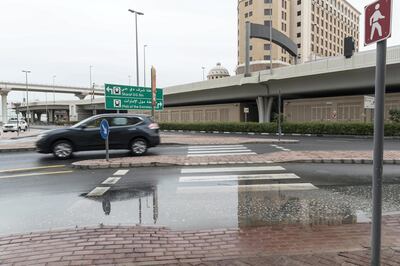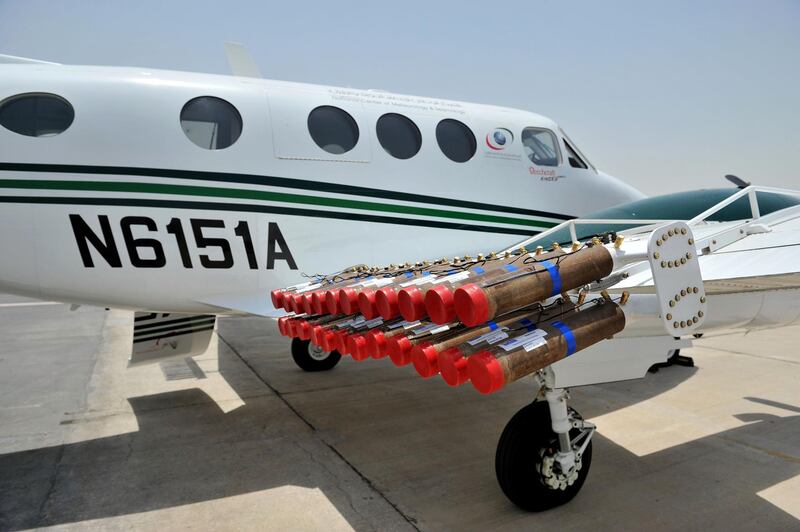The UAE is planning for a rainy day, with weather experts taking to the skies to complete 20 cloud seeding missions so far this year.
Most of the flights, which are carried out by the National Centre of Meteorology, took place during the past two weeks, coinciding with downpours across the Emirates.
Cloud seeding is a method used to induce more rain from a cloud, a process that is crucial in a country with an annual rainfall rate of about 100mm.
While all-year sunshine is a major attraction for the UAE, more rainfall could provide water for crops and is significantly cheaper than desalination.

The seeding programme is based in Al Ain, and when a suitable cloud is spotted on the radar, planes are sent up to seed the cloud.
Seeding involves shooting a salt flare into the cloud. Salt naturally attracts water, the water particles then collide with others, get bigger and hopefully fall as rain.
That's the theory. But how much rainfall is generated is hard to quantify, with the NCM saying more data and studies are needed.
"The amount of missions is typical for this time of year," said Khalid Al Obaidly, head of cloud seeding at the NCM.
"In winter we usually have clouds that come from west to east. Many don't touch the country during the winter so we don’t do seeding."
Contrary to some perceptions, summer is the most effective time. During these months, the monsoons bring water-soaked clouds from India to the Arabian Peninsula. This causes the phenomenon known as "khareef" in Oman, where the desert turns green, and it also brings rain to the UAE's mountainous east.
"Summer is better because of the mountains and moist air coming from Oman," Mr Al Obaidly said. "It [seeding] happens a lot."
According to the NCM, seeding can boost rainfall from an individual cloud by as much as 35 per cent in a "clean atmosphere" and by up to 15 per cent in a dusty one. The lower figure is probably more representative of the UAE.
The NCM said the cloud seeding campaign in the Emirates started back in the 1990s and is still on the rise. The UAE conducted 242 missions in 2017, which was up from 177 the year before.
The UAE has also established the Research Programme for Rain Enhancement Science to determine how effective seeding can be.
“Rain gauges will help but some clouds are between 8 to 10 kilometres between each rain station," said Sufian Farrah, cloud seeding expert at the NCM. "So the size of the [water] droplets can also be monitored through radar reflectivity."







